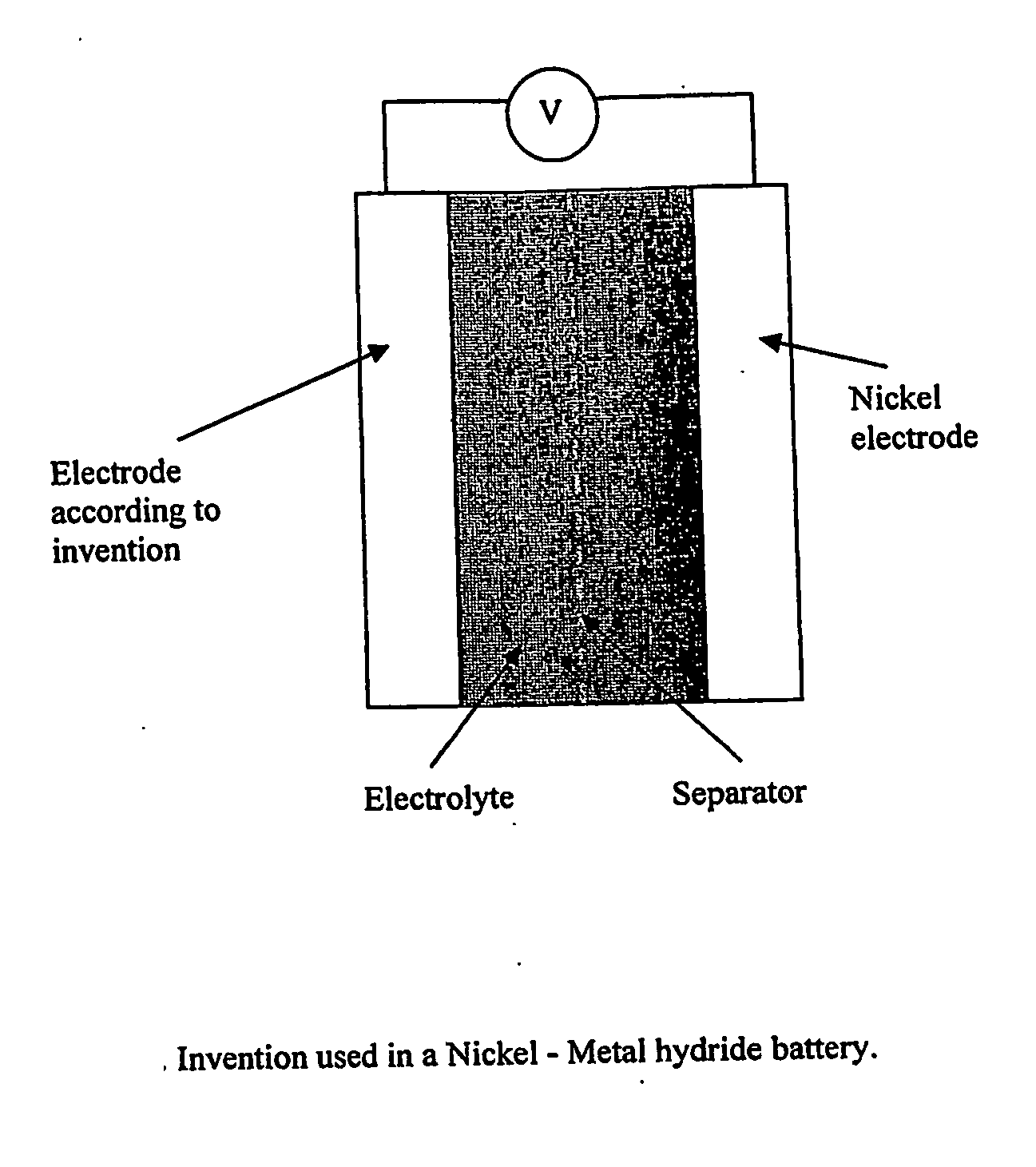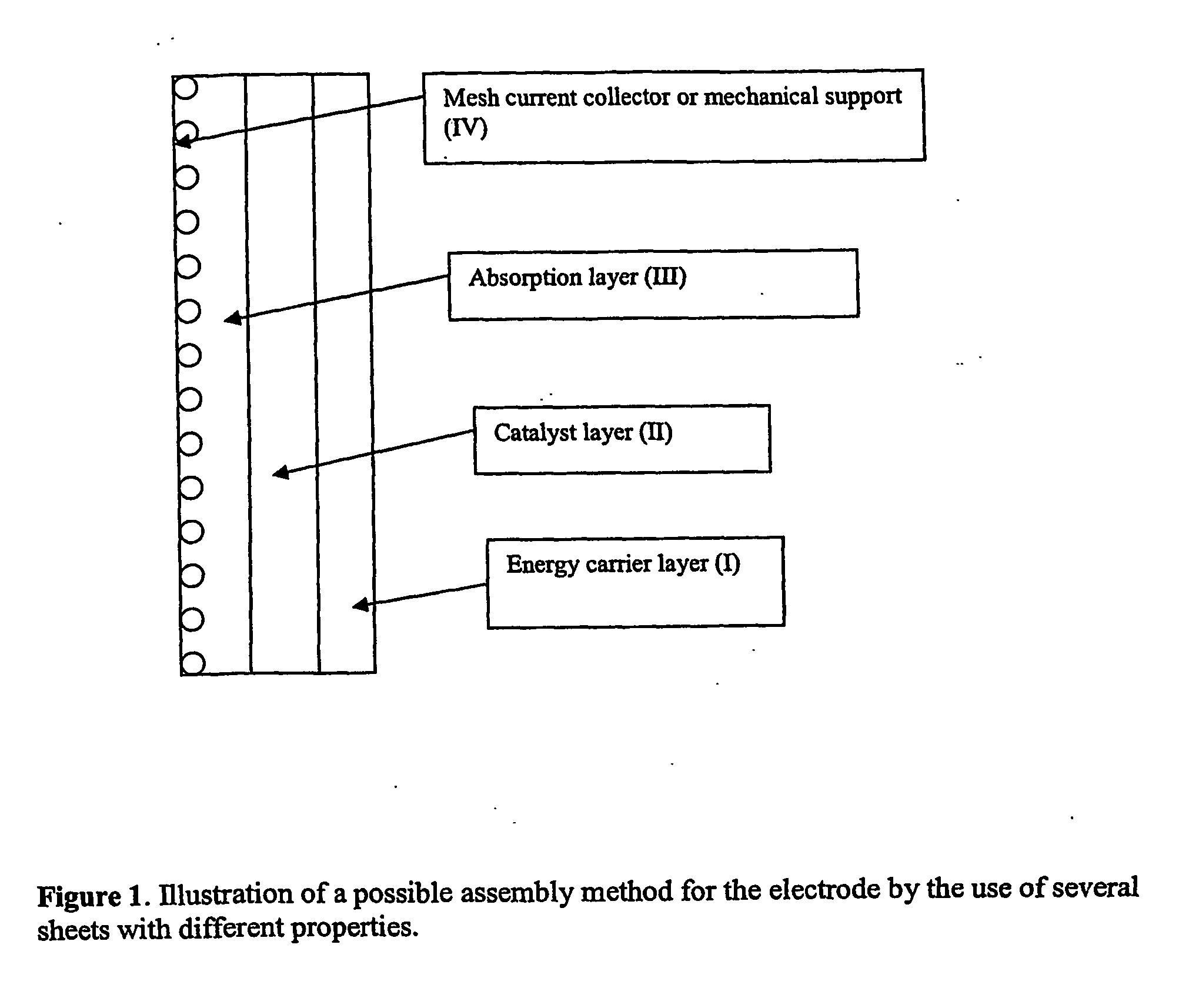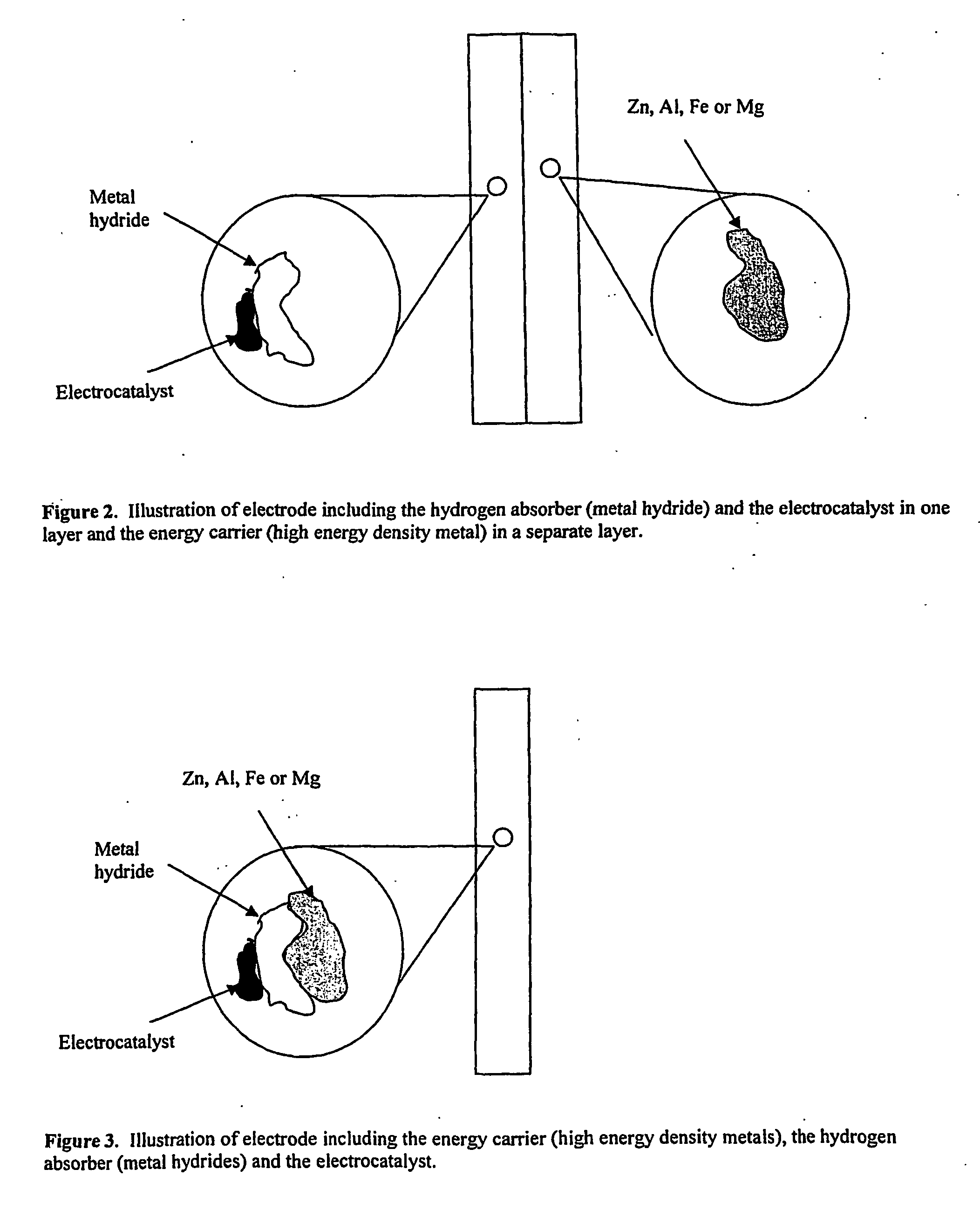Electrode, method of its production, metal-air fuel cell and metal hydride cell
- Summary
- Abstract
- Description
- Claims
- Application Information
AI Technical Summary
Benefits of technology
Problems solved by technology
Method used
Image
Examples
example 1
[0074] In the following example the effect of adding an electrocatalyst to the metal electrode is illustrated. It is shown that the electrocatalyst will increase the total current density by oxidation of the hydrogen that is produced by the corrosion reaction on the metals.
[0075] A powder electrode was prepared by the use of metal powders, such as Zn, Al, Mg or Fe, a carbon powder with and without catalyst support and PTFE. The electrode was prepared by mixing the powders in a high speed mill at 20 000 rpm. This produced an agglomerate. The agglomerate was made into a clay by the use of a hydrocarbon solvent. The clay was calendared into an electrode. A Ni mesh was calendared into the electrode as a current collector. The amount of metal (Zn, Mg, Al, Fe) was varied from 5 to 95 wt %. At least 5 wt % PTFE was added to bind the electrode together.
[0076]FIG. 7 shows the rate of hydrogen oxidation on a Pt catalyst and the dissolution current for Mg dissolution. The figure shows the cu...
example 2
[0082] As shown in FIG. 1 and FIG. 2 electrodes can be prepared by connecting several layers with different composition. In the following example it is shown that hydrogen formed in a pure energy carrier metal layer will diffuse into a pure catalyst layer and there be oxidised to give an additional contribution to the current.
[0083] Two separate layers were prepared and then combined by calendaring them together. One layer was prepared with a high energy density metal the other was a carbon layer. Both layers were made from powders by agglomerating and calendaring as described above. No catalyst or carbon was present in the metal electrode, only PTFE and metals such as Al, Zn, Mg, Fe or combinations of these metals. Carbon electrodes were prepared by the use of 15 wt % PTFE and 85 wt % carbon.1 wt % Pt was deposited onto the carbon support.
[0084] When carbon is used in a layer a porous structure is obtained. This allows rapid diffusion of hydrogen into the layer. The catalyst (Pt)...
example 3
[0089] In the following example it is shown that hydrogen production by corrosion of metals can be stored in hydrogen storage metals and react on the surface of the storage metals.
[0090] Electrodes were prepared with metals powders of Al, Fe, Zn or Mg, carbon with or without catalyst and PTFE. A Ni alloy with storage capacity of hydrogen was deposited onto the metal powders. This was done either by electrochemical or electroless deposition of Ni-P. The powders were agglomerated and calendared as described above.
[0091]FIG. 10 shows hydrogen oxidation at an overpotential of +100 mV in 6.6 M KOH on an electrode according to an embodiment of the invention containing a Ni—P alloy that was deposited on Al and a carbon pore former. Corrosion of the Al produces hydrogen. This hydrogen was absorbed into the alloy. With anodic polarisation the absorbed hydrogen reacts on the surface. The current increases when additional hydrogen from the corrosion of an Al sheet is connected to the electro...
PUM
 Login to View More
Login to View More Abstract
Description
Claims
Application Information
 Login to View More
Login to View More - R&D
- Intellectual Property
- Life Sciences
- Materials
- Tech Scout
- Unparalleled Data Quality
- Higher Quality Content
- 60% Fewer Hallucinations
Browse by: Latest US Patents, China's latest patents, Technical Efficacy Thesaurus, Application Domain, Technology Topic, Popular Technical Reports.
© 2025 PatSnap. All rights reserved.Legal|Privacy policy|Modern Slavery Act Transparency Statement|Sitemap|About US| Contact US: help@patsnap.com



